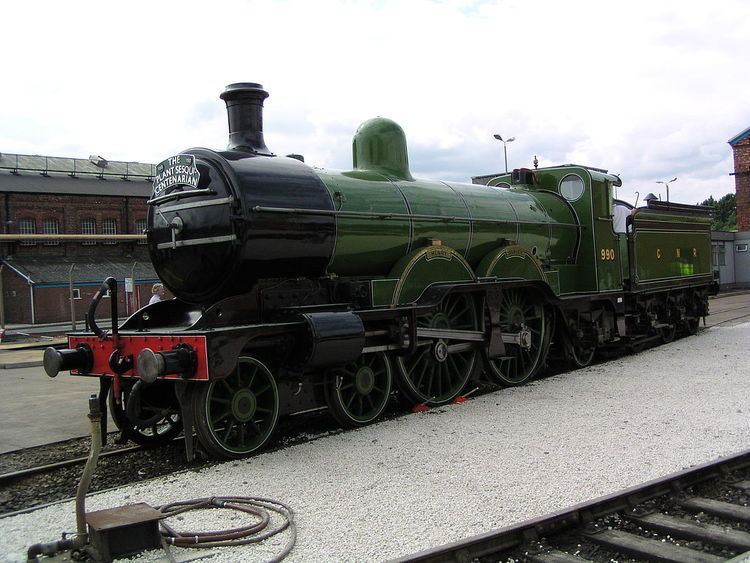Power type Steam Total produced 22 | Build date 1898–1903 | |
 | ||
Serial number 769, 872–881, 974, 996–1003, 1005–1006 | ||
The Great Northern Railway (GNR) Small Boiler Class C1 is a class of steam locomotive, the first 4-4-2 or Atlantic type in Great Britain. They were designed by Henry Ivatt in 1897. In total 22 were built between 1898 and 1903 at Doncaster Works. The class were commonly known as 'Klondykes' [sic], after the 1897 Klondike gold rush.
Contents
History
The 4-4-2 or Atlantic type made its first appearance in 1888 in the United States of America. It was the natural development of the 4-4-0 the additional trailing truck not only supporting a larger firebox but improving the riding. Ten years later the GNR's Henry Ivatt introduced the Atlantic type engines to Britain.
Ivatt had the daunting task of replacing the venerable Patrick Stirling at the head of the GNR's locomotive department. Stirling, who had died in office aged 75, was revered not only for the performance of his locomotives but for their looks as well. 'Artistry in metal' was one description of his work and many consider the legendary Stirling Single to be the apotheosis of British locomotive aesthetics.
By the turn of the century, however, these single wheelers were being taxed by increasing train loadings on the East Coast Main Line. Seeking greater power and adhesion, Ivatt took the American route. He was not alone; his counterpart on the Lancashire & Yorkshire Railway, John Aspinall was also working on an Atlantic. Possibly to register a British first construction of the type, Ivatt's Atlantic was given a high priority by the GNR. Numbered No.990 and named Henry Oakley after the general manager of the railway, it was outshopped from Doncaster works in 1898, beating Aspinall's prototype by a few months.
Like Churchward on the Great Western Railway Ivatt placed great importance on the boiler design. On No.990 he opted for a large capacity vessel and it was this extra steam raising capacity that gave the Atlantics the edge over Stirling's single wheelers. The first production Atlantics entered service in 1900 and proved fast, lively runners. So lively indeed, that Ivatt had to caution his drivers to rein in the speed because stretches of the track between London and Doncaster were considered too uneven for safety! In their turn, the enginemen would have told Ivatt that the cylinders were no match for the boiler. These first Atlantics had to be worked at undesirable and uneconomic rates to achieve the expected performance; in other words they were thrashed.
Following on from this success Ivatt built the large boiler GNR Class C1.
LNER ownership
After the 1923 grouping this class became London and North Eastern Railway (LNER} Class C2, whereas the large boiler engines were LNER Class C1. GNR's own Class C2 Atlantic tank locomotives became LNER Class C12.
Preservation
Only one of the small boiler C1 class has survived into preservation and it was the very first. No.990 Henry Oakley is preserved as part of the national collection. Although operated since preservation, it is now on static display and as of April 2016 was on static display at the National Railway Museum, York.
